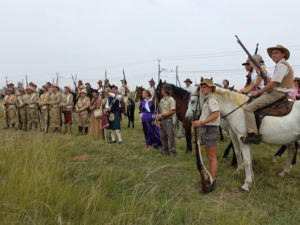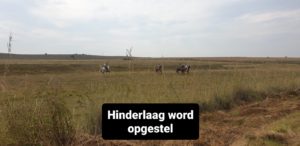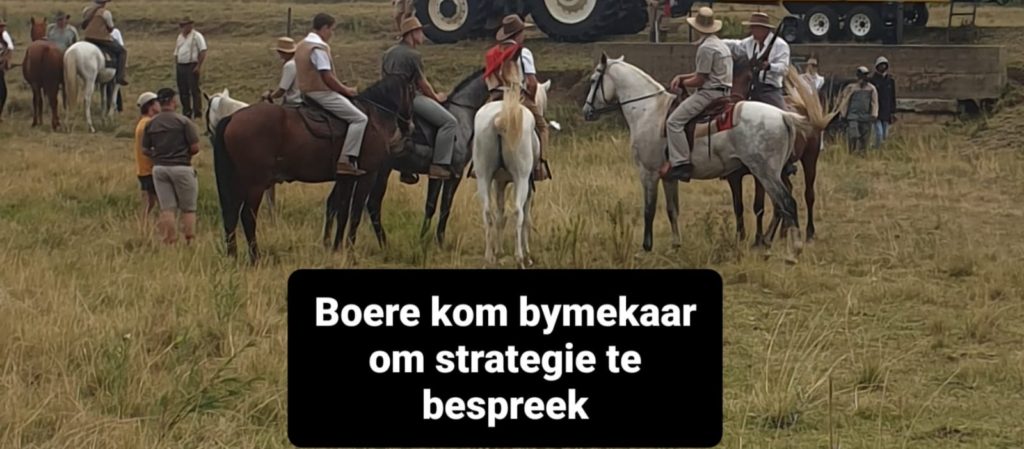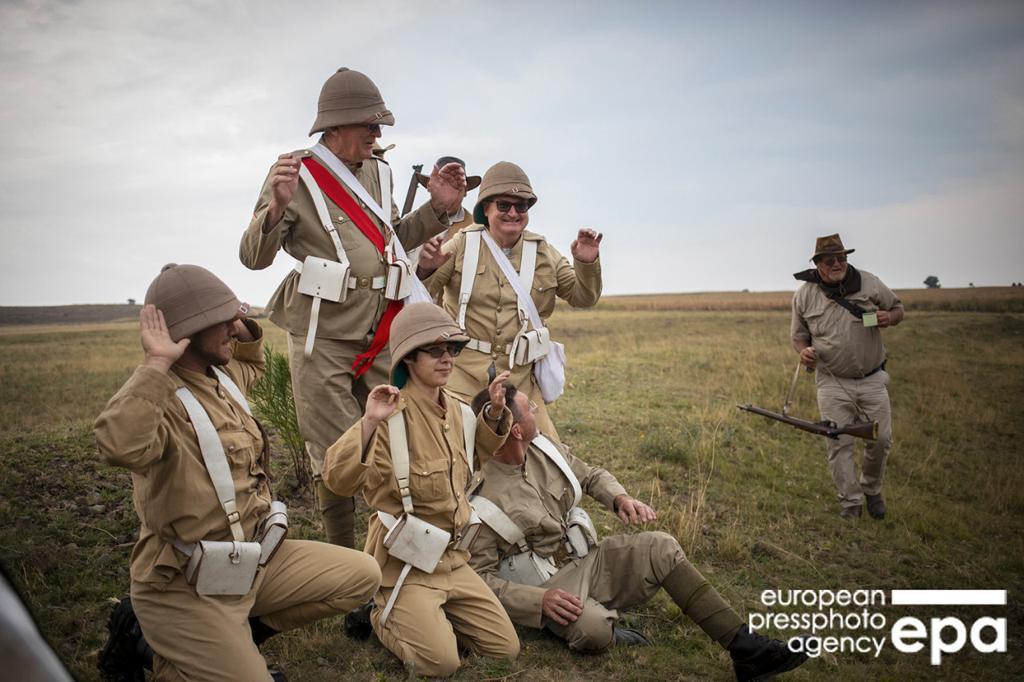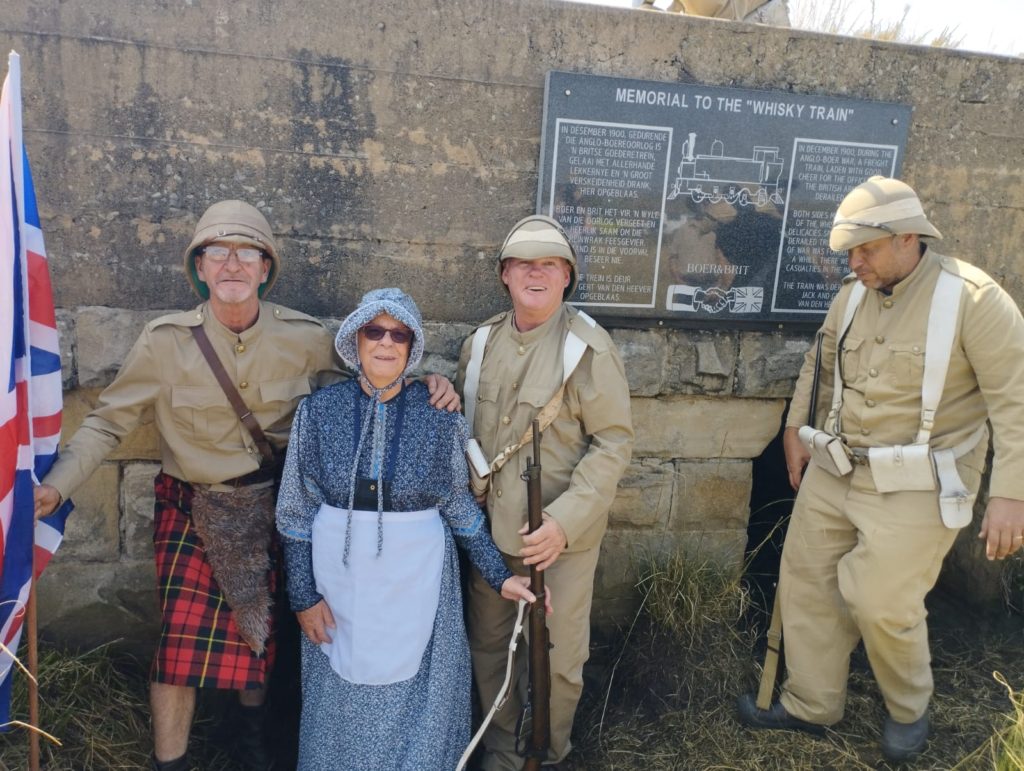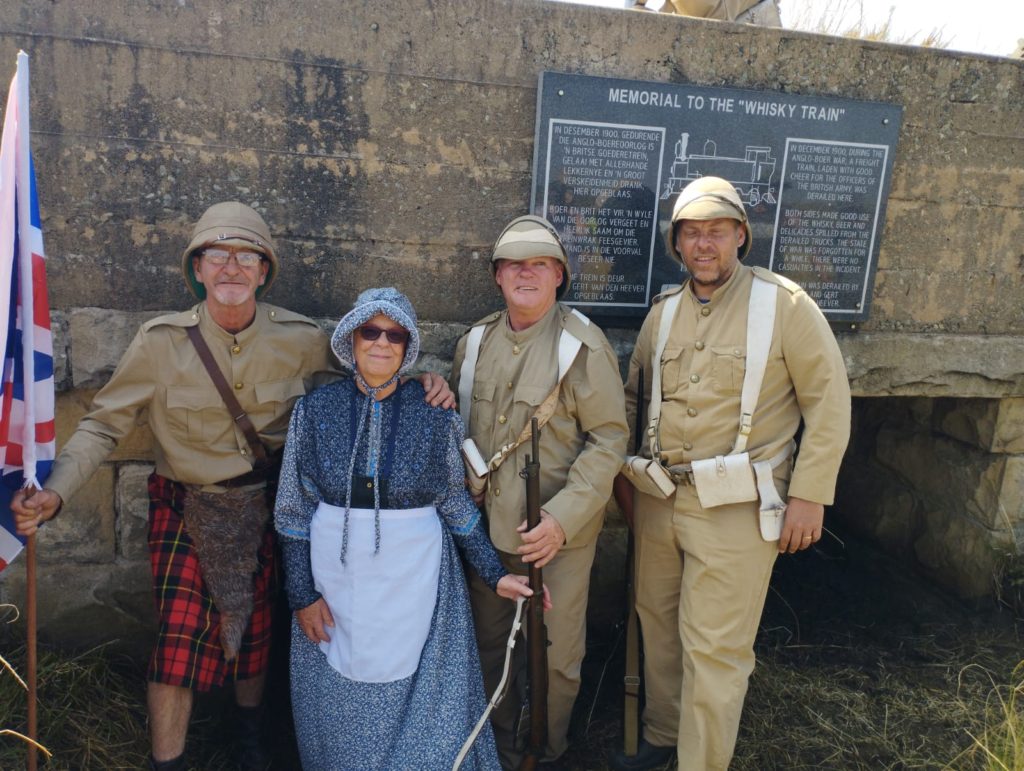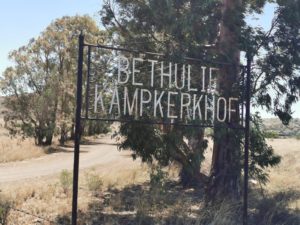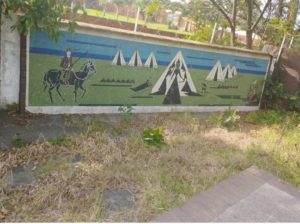Die Whisky Trein
Val / Heidelberg Greylingstad
Mpumalanga
ABO
Die spoorlyn tussen Natal en Johannesburg/Pretoria was van uiterste belang vir die Britse Mag tydens die ABO aangesien dit hulle voorraadlyn was. Die spoorlyn tussen Standerton en Heidelberg was veral kwesbaar en die Heidelbergers onder bevel van Komm. Fanie Buys het hier menige spoor, trein en brug opgeblaas.
Desember 1900 het Komm. Buys ‘n geskikte plek uitgesoek om ‘n verbygaande trein aan te val. Twee broers Jack en Gert van den Heever is opdrag gegee om die plofstof te begrawe en te aktiveer. Die ontploffing het verskeie trokke van ‘n goederetrein ontspoor en teen die wal laat afrol. Die Heidelbergers vind toe ‘n hele voorraad bedoel vir Kersvieringe en Nuwejaarsvieringe verstrooi lang die spoorlyn. Die feesvieringe wat hierna gevolg het was vrolik en die Heidelbergers sowel as die gevange Britte kon heerlik saamkuier.
3 November 2012 is ‘n granietsteen opgerig op die plek waar die voorval plaasgevind het. Jaarliks word daar by Val feesgevier om hierdie gebeurtenis te vier.
*****
R547 The South African Military History Society/ Die Suid-Afrikaanse Krygshistoriese Vereniging
Military History Journal Vol 15 No 6 – December 2012
The Whisky* Train by Robin Smith
Note: * ‘Whisky’, not ‘whiskey’, which is Irish and, according to the Scots, for less discriminating drinkers
Everyone and everything can be famous for fifteen minutes. Val was famous in April 1902 when General Louis Botha arrived at the station and boarded a train to Johannesburg under a safe-conduct granted by the British Army. He was on his way to attend the negotiations about ending the Anglo-Boer War and a famous photograph shows him speaking with British officers on the platform. The station is no longer and trains only stop there when a signal is against them.
The railway line from Volksrust to Elandsfontein (Germiston these days) was built by the Natal Government Railway and joined up with the Zuid-Afrikaansche Spoorweg Maatschappij’s system in 1896. This connection opened up trade between the ZAR (Transvaal Republic) and the Colony of Natal. It was very useful when war was declared in October 1899. Riding a train to the war was a lot quicker than a horse.
After the capture of Johannesburg, Pretoria and Lydenburg by Lord Roberts’s army, the line became one of the lifelines for supplies of food and munitions for the British army. The stretch of line between Standerton and Heidelberg was particularly vulnerable to attack. The Heidelbergers under Commandant Fanie Buys were especially adept at blowing up trains, culverts and even bridges.
The British eventually protected their railways with block houses sited at intervals of one thousand yards (914m), but in 1900 these little forts had yet to be built. More than thirty trains were blown up and derailed on this stretch of line before these defensive measures could be put in place.
In December 1900 Commandant Buys selected a likely place where a successful attack could be made on a passing train. The elevated line passed over a small stone culvert a short distance up the line from Val station. Undulations in the ground provided hiding places for the two men who must lay and detonate the mine. Two brothers were given that task and they spent several hours one night burying a bag of black powder between the lines. They used a magneto generator to explode the charge but, as they only had two hundred yards (183m) of wire, they had to hide themselves nearer than this to the train – and the explosion!
The brothers were Jack and Gert van den Heever and Jack later wrote an entertaining account of their night’s work in a little book published in the 1940s, Op Kommando onder Kommandant Buys. The quality of the writing is such that their relative, C M van den Heever, must surely have lent a hand. The mine exploded under the goods train and several trucks turned over and rolled down the embankment. Buys’s Heidelbergers galloped up to find the cargo of good cheer for the Christmas and New Year celebrations in Johannesburg and Pretoria spread liberally along the railway line. The party that ensued involved the captured ‘Tommies’ as well as Buys’s men. Jack and Gert seem to have been the instigators. Indeed Jack, rather inebriated after perhaps an excess of sampling the many wares, extracted permission from one of the older commando members to marry one of his daughters which he duly did once the war was over.
Commemoration
On 3 November 2012 this incident was commemorated. Val was famous again, but for more than fifteen minutes. A granite plaque was unveiled, attached to the culvert on the embankment of the old NGR line where this incident certainly took place. Rita Britz, a leading citizen of Val, who has driven this project from the beginning, had assembled nearly a hundred guests and some descendants of Jack and Gert van den Heever. Union Jack and Vierkleur were in evidence but Boer and Brit partied just like in December 1900*****
https://www.valhotel.co.za/history.htm History of Val
The Waterval Camp was Private Tucker’s favourite camp, as described in his “Boer War Diary”. Although no big battlefields are to be found in this area, the stage was set for many anecdotes and daily skirmishes between the Boers and the British.
On 29 December 1900, the famous “Whiskey Train” incident occurred. The story according to Private Tucker:
“some time during the morning the Boers had held up a train up about six miles away. The train was partly loaded with canteen goods, also forage and a quantity of bottled beer, spirits and champagne. The Boers took all the liquorsaway on five ox wagons loaded with goods.”
The site of the Whisky Train is situated about 4km’s from Val Afrikaner families joining forces with the English created more bitterness. It is said that these traitors sat on the front of the horse and cart to point out the various farms that the English would burn down.
Incidents such as these caused many Afrikaners of the area to join Jan Smuts in his “Forgive and Forget” policy of a united South Africa, which would ensure harmony for all nationalities. For, they said, “If our own people could betray us during the war, surely we can forgive the English.”
It was about this time that the name “Waterval” was officially changed to “Val”
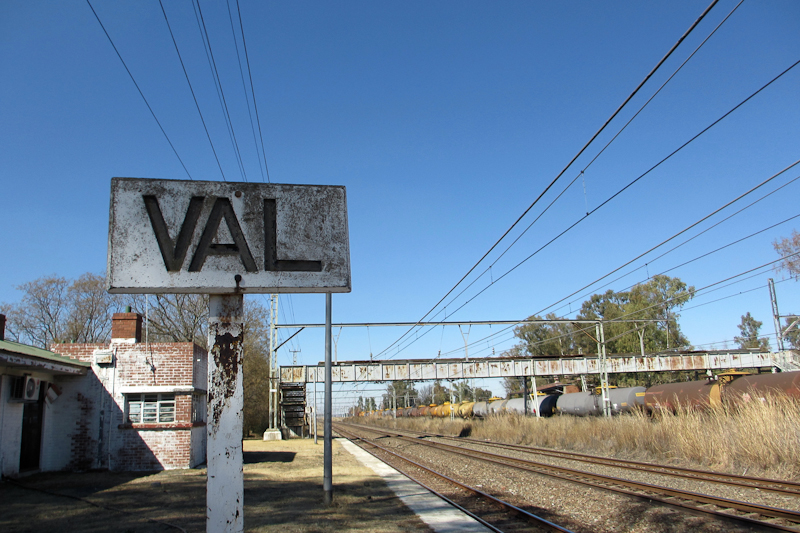
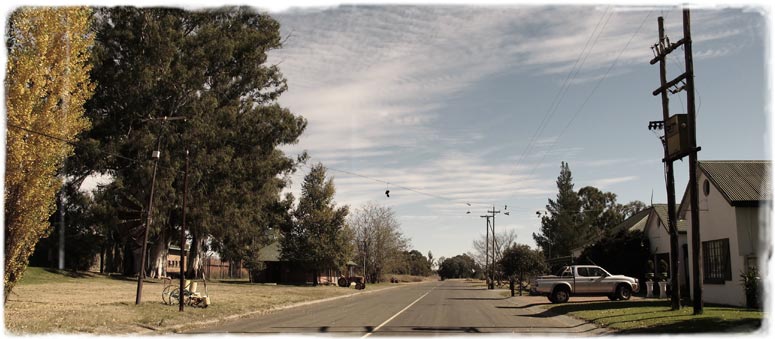
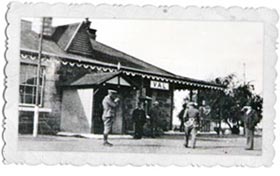
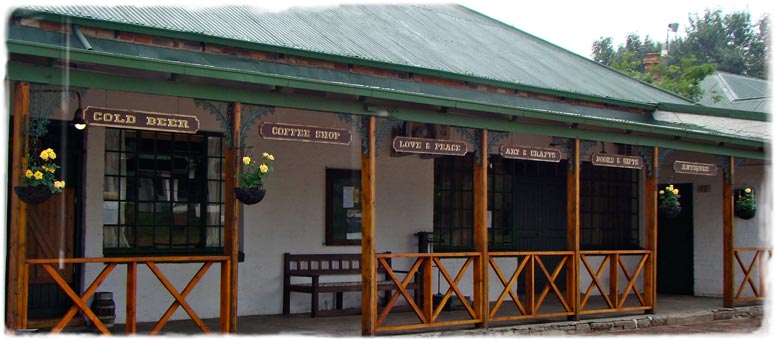
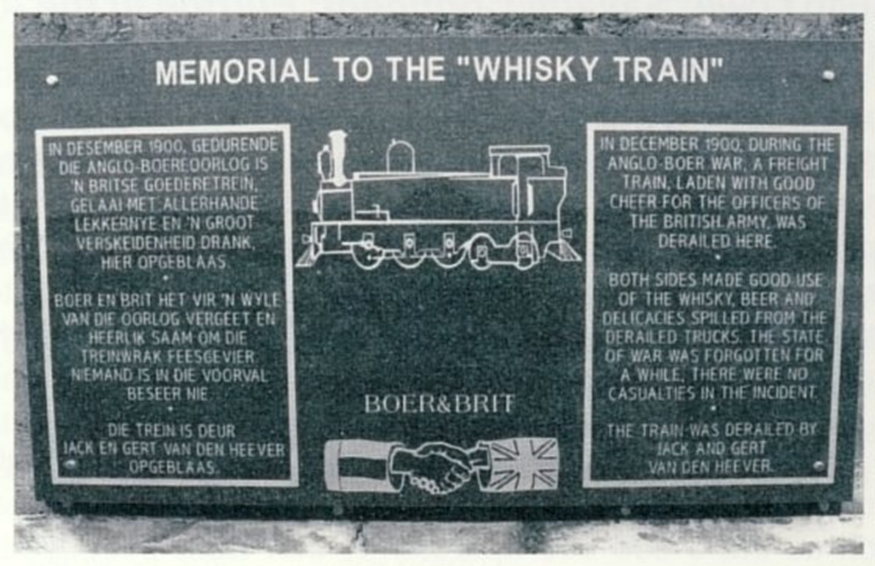
Fotos Gysbertus Johannes Ströh Junie 2019






The Heritage Portal Newsletter #14 2024
When whisky stopped a war for a day
In Val, you can enjoy a re-enactment of a time when Boer and Brit put down their arms to enjoy a feast
10 APRIL 2024 – 05:00
by LUCILLE DAVIE
It was a tense moment. Two Boers were hiding in the long grass as the train approached. Then the train convulsed with the explosion and several trucks fell down the bank, spilling their contents into the grass, among them cases of whisky.
There were plenty of pith helmets, veldskoene and khaki shorts and shirts at the re-enactment of the Whisky Train event in March 2024.https://bvt.r66net.com/Images/logo-invibes-grey.svg
About 6km outside a dot of a place called Val, just over the Gauteng border into Mpumalanga, is a small concrete railway culvert. On December 29 1900, just over a year into the South African War, Commandant Fanie Buys selected this spot to derail a train on its way to Johannesburg and Pretoria in the then Transvaal. The British had marched into Joburg on May 31 of that year, and Pretoria on June 5.
Two brothers, Gert and Jack van den Heever, placed dynamite on the tracks. The British commanders were sending New Year’s fare to the troops to keep their spirits up. Before the British built blockhouses along the lines, the Boers often blew up the lines, and so it was in December 1900. Except this time, it was something both sides could celebrate.
In 1900 the explosion derailed several trucks, and the armed Boers rode up on their horses, ready to take prisoners and claim a victory. But what they discovered was that the cargo was whisky, and good things to eat. So Boer and Brit settled down to a hearty feast, arms laid aside for a while. There were no fatalities, and the next day the hostilities resumed.
With about 100 other people, I stood on the dusty white and pink cosmos-lined road, facing the culvert. Over it was a small mobile tiered stand, pulled there by a tractor. Seated in the stands were khaki-clad and pith-helmeted British soldiers, with rifles, several Union Jack flags fluttering under the overcast sky.
An explosion echoed across the short distance to the spectators, a signal to about 20 mounted and armed Boers to come riding around a small rise. Rifles raised, blank shots were exchanged between the two sides, white puffs of smoke rising gently into the early autumn sky. The Boers crept forward, firing all the while, until the British commander, outnumbered and outgunned, raised his arms, and shouted, “Surrender!”
The mounted Boers rode up to the stand, others ran up, and accepted the surrender. I didn’t see much whisky, but the whole show was great entertainment. One of the pith-helmeted men on the “train” stepped forward and played Sarie Marais on his bagpipes, a gesture of reconciliation. It was well received, a burly spectator standing next to me singing lustily.
In 1900 the young Jack van den Heever, made brave by whisky, asked permission to marry one of the older commando’s daughters. And dad, feeling whisky-merry perhaps, gave his permission — the couple were married after the war.
“We are very excited to be reliving history,” said Anemi Hancke, a local farmer. “It’s good to belong, to be a part of something positive. It was a special moment in history when the Boers were hungry, thirsty and destitute.” Her husband, Vic, is the organiser of the event.
Original South African War rifles were used, loaned by the Dundee Diehards, a volunteer group based in KwaZulu-Natal who travel around the country doing re-enactments. The horses Vic Hancke and his sons rode were descendants of the horses his great grandfather bred before the war. About 90% of the mounted farmers were local, but others came from Volksrust, Perdekop and Newcastle, almost 200km away.
This is just one reason to visit Val, near the Waterval river, consisting of a hotel, a church, a police station, four houses, a sports club, and a refashioned post office and railway station, with a single road of about 1km running through it, and a population of eight.
Val is awash in history. On April 6 1902, Gen Louis Botha arrived at the Val station in a Cape cart to board a train to take him to a meeting in Klerksdorp with president Steyn and other Boer leaders. In Val a meeting was held in the voorkamer of the Val Hotel across the road from the station to brief commandants about plans to end the war, which took place seven weeks later with the signing of the Peace of Vereeniging in Pretoria.
Mahatma Gandhi, who spent 21 years in SA and formed his passive resistance movement here, was arrested and spent a night in the Val police station cells 100 years ago. He was on a march of resistance against discriminatory laws, from Newcastle to Joburg. That police station is now derelict; there is a new one at the end of the road. There is obviously not much crime in the village — when I strolled the half a kilometre down Smith Street to the station on Sunday, it was shuttered and chained. Capt Sibusiso Mbuli said there are 37 officers at the station, their major concern stock and copper cable theft.
The hotel’s history goes back to 1896, when it was built by a Yorkshireman, Joseph Smith. Smith arrived in SA in the 1850s, and made his way to the diamond fields of Kimberley, where he met and married a widow, Elizabeth Kerslake, and adopted her three sons. In Mpumalanga he built a stagecoach inn on the banks of the Waterval River, on the route to the gold fields of Joburg. When the railway reached Val, a station was built.
The family cemetery, in a nearby field, bears witness to the abundance of Smiths and Kerslakes in the area. The wall of plaques in the grounds of the 60-year-old sandstone Methodist church is full of English names.
The owner of the hotel, Rita Britz, is a sixth-generation descendant of the Van den Berg, Steyn and Engelbrecht families, who have been farming in the area since 1886. She was married in the church and raised her three children in Val. She used to be a teacher in Standerton, but one bright day in 1994 she stood on the stoep of the post office across the road from the hotel, together with a bank official. The derelict hotel was up for auction, with bidding starting at R1,500. When the figure got to R18,000, the banker suddenly stopped, and the hotel was Britz’s. “I ran to the tickey box and phoned my sister, and said to her: ‘I’ve just bought a hotel!’” She bursts into laughter at the thought now, 30 years later. She bounces up and down Smith Street, welcoming visitors, always ready to tell a story.
She took eight months to renovate the building — restoring Oregon pine flooring and tall slated ceilings, and keeping a small section of original mud-brick wall in the voorkamer. “The front rooms of the hotel are still mud brick,” she explains. There is a well in the garden, a hint of times past, now closed over.
She has taken over the post office across the road, which closed 20 years ago, and has refurbished it into two rooms. The old station building — the steady flow of freight trains don’t stop here — has been developed into a large backpackers room, giving her 15 hotel rooms in all. She bought the trading store next door to the hotel and converted it into a museum and restaurant and pub, called the Moeggeploegkroeg.
I wandered around the museum, packed with memorabilia, including the old telephone switchboard with Tannie Billie’s chair. A beautiful blue and white ceramic washbasin and jug are on display in a glass cabinet. They were hidden in the poplar bushes nearby by Christina Steyn when she heard that the British were burning homes.
Back in the village after the Whisky Train re-enactment, I wandered around the stalls in the grassy square. There were Scottish-kilted fellows speaking Afrikaans; an ancient bitterender wearing a sackcloth tunic and hat, with khaki socks and vintage binoculars around his neck, sporting a white beard; and a lookalike Afrikaner Weerstandsbeweging leader Eugene Terreblanche, with his white beard, blue khaki shirt and black felt hat with a small feather in the hat band. I heard Britz announce: “It’s not a skander to be an Englishman.”
Some of the original Smith family still farm in the area, together with their Afrikaans neighbours. Perhaps that spirit in December 1900 still brings them together now. The music in the square was a mix of Boeremusiek and bagpipes, and it felt good.
The culvert now has a granite plaque commemorating the merry occasion, and the railway track has been moved a little south.
Travel notes:
Val Hotel
There are 15 rooms in the hotel, post office and railway station.
Cost: R750 for a single room; R950 for a double room.
Oudehouthuis
This restored house has seven self-catering rooms and is on a working farm.
Cost: Single rooms are R950; double rooms R1,100.
The Whisky Train re-enactment event is held during school holidays as most people are away in December.
